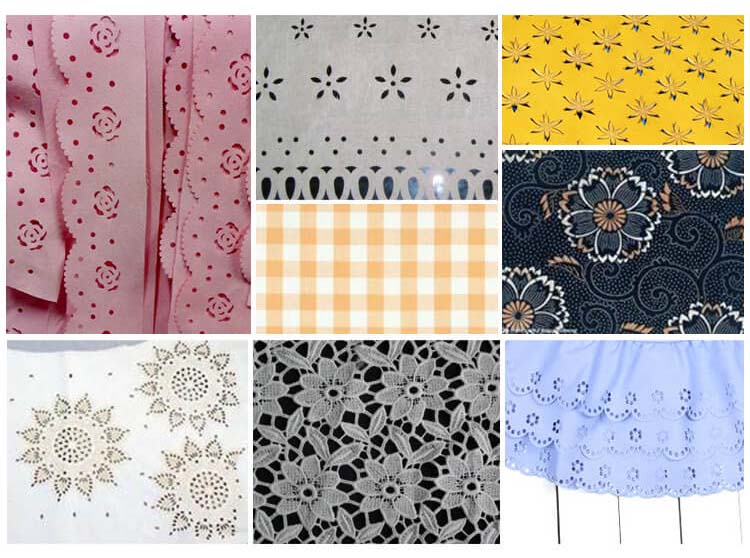Views: 22 Author: Site Editor Publish Time: 2022-12-21 Origin: Site
iGoldenCNC designs and builds CO2 laser machines specifically for cutting, engraving and perforating of fabrics and textiles. Our laser machines have the ability to cut fabrics and textiles into sizes and shapes efficiently and sustainably on large cutting scales, as well as cutting complex internal patterns on smaller cutting scales. Laser engraving textiles and fabrics can achieve incredible visual effects and tactile surface structures.
Laser Cutting and Engraving in Clothing Industry
With the growing popularity of textiles, fashion and apparel industry is developing rapidly. And it is becoming more suitable for industrial processes such as cutting and engraving. Synthetic as well as natural materials are now often cut and engraved with laser systems. From knitted fabrics, mesh fabrics, elastic fabrics, sew fabrics to nonwovens and felts, almost all types of fabrics can be laser processed.
Lightweight, noise absorption, hygienic material, easy to maintain, all these features have accelerated the promotion of the fabric air dispersion system in the past decade. As a result, the demand for fabric air dispersion has been increased, which challenged the production efficiency of the fabric air dispersion factory.
Precise and high-efficiency of laser cutting can simplify the procedures of processing fabric.
For air dispersion applications, there are mainly two typical materials, metal and fabrics, traditional metal duct systems discharge air through side-mounted metal diffusers. The air is directed to specific zones resulting in less efficient mixing of air in the occupied space and often causing drafting and hot or cold spots; while the fabric air dispersion has uniform holes along with the entire length dispersion system, providing consistent and uniform air dispersion in the occupied space. Sometimes, micro-perforated holes on slightly permeable or impermeable ducts can be used to deliver air intensively at a low velocity. Uniform air dispersion means better air mixing which brings better performance for those areas that need ventilation.


Laser engraving of fabric is to remove (engrave) the material to a certain depth by controlling the power of the CO2 laser beam to obtain contrast, tactile effects or to perform light etching to bleach the color of the fabric.
Laser Kiss Cutting
Laser kiss-cutting is used to cut the top layer of material without cutting through an attached material. In fabric decoration industry, laser kiss cut makes a shape cut out of the surface layer of the fabric. The upper shape is then removed, leaving the underlying graphic visible.
Normally a CO2 laser cutter is used to cut the fabric into the desired pattern shapes. A very fine laser beam is focused on to the fabric surface, which increases the temperature substantially and cutting takes place due to vaporization.
One of the desirable processes is laser perforation. This step allows to perforate the fabrics and textiles with a tight array of the holes of the certain pattern and size. It is often required to provide ventilation properties or unique decorative effects to the end product.
Automatic rectifying deviation and tensionless feeding and winding systems facilitate laser processing to be efficient and accurate.
The optimized mechanical drive structure and optical path structure allows for more stable machine operation, higher speed and acceleration, superior laser spot quality and ultimately enhanced production capacity.
High stability laser tube, imported lens and mirror, long life-span.
The up-down work table design satisfies the customers need of engraving thick materials.
Adopt advanced DSP digital control system, international standard laser power supply, integrated framework style ,usb2.0 interface output can support off-line working.
Strong software function, compitable with Coreldraw, Autocad and so on.
Auto focus system, water pump, air pump and rotary attachment are optional.
content is empty!